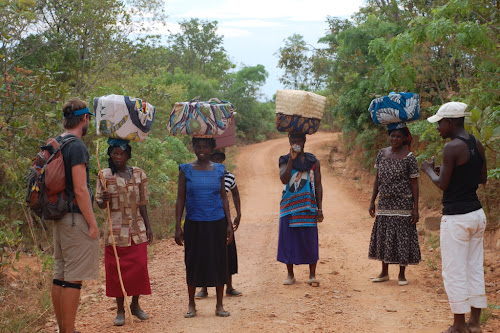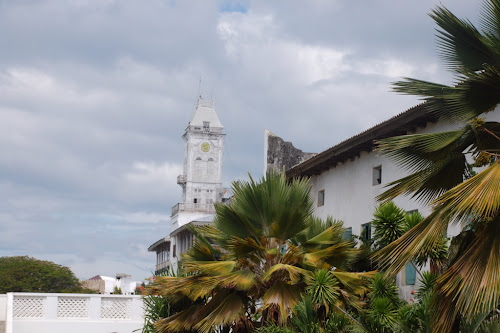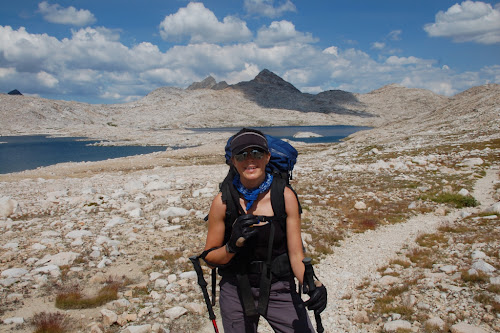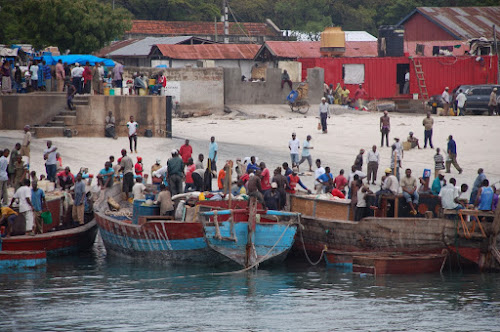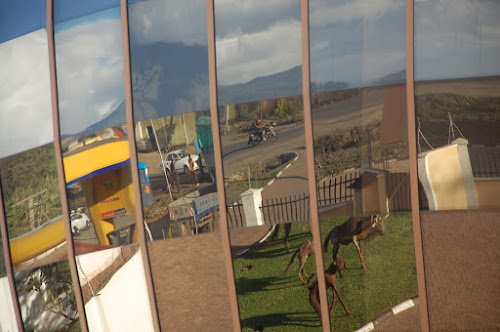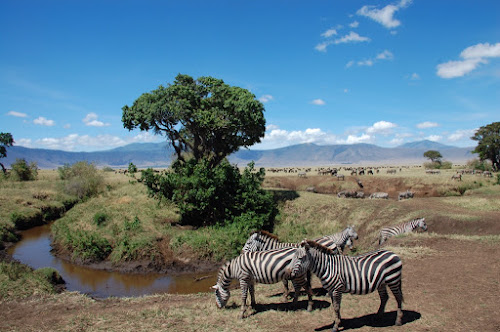***Parental discretion advised: eyewitness account of animal intercourse
The first major activity/destination along our overland tour is across the Tanzanian border, on the famed northern circuit of safaris. We are based for 4 days in Arusha, with the option to head further west towards the many national parks that are home to all sorts of big animals, crazy looking birds and massive vistas.
We weren't sure what option to select and eventually narrowed in on a 2 day safari with one day at Lake Manyara National Park and the other at the Ngorongoro Crater Conservation Area. The agenda for both days consisted primarily of 'game driving' which is basically hanging out in a Toyota Land Cruiser equipped with hinged roof panels. The roof panels allow riders, by standing on the seats, to poke out of the top of the cruiser.
The guide drives the truck on 4x4 tracks, while everyone keeps their eyes peeled for animals. When you see something interesting, you drive as close as possible, park the truck, turn off the engine, and watch. The stillness of the vistas after the car is turned off is quite satisfying and we ended up hanging out -- transfixed for large chunks of time while nature took place right in front of our eyes.
The animals, some of whom are truly massive such as elephants, and others that are extremely dangerous, such as lions, are inured to the 4x4s. Perhaps the animals see the truck as a single large entity and one that is not fruitful for hunting or messing with -- probably its not worth the calories required to take on the hunks of mental -- even if there are tasty people on the inside. This allows us to get incredibly close, in some cases just a few feet, from animals that are wild in every other sense of the word.

I know this is going to be a shock, but Mu and I really enjoyed the entire experience. We stood on those cruiser seats pretty much the entire time in both parks, saw about 20 large mammals and at least as many cool birds. In essence, the entire set up is fantastic and we had 2 truly unforgettable days. I got an additional thrill over watching my lovely wife throughout both days, seeing and feeling her unbounded excitement. The biology major in her (true story) came to the fore and her love for animals and birds was palpable. Seeing that pleasure in my life partner brings me profound happiness.
Lake Manyayara National Park
This national park is about a 2 hour drive from Arusha, a drive made much more interesting because it traverses through a number of Masai villages, and passes thousands of cows in herds being tended by shepherds as young as 7-years old. The men (or boys) are usually clothed in bright red wraps, carrying a stick used to manage the animals, while the woman are in blue and carrying a bundle of sticks or jugs of water on their heads.
The national park is quite good for a safari because it is on the smaller side and has a number of biomes within its borders, leading to a nice diversity of animals. We drove first through a rain forest section, which had a number of ververt monkeys and baboons. I really enjoyed watching the interplay of the pack in the baboons, who had some cute interactions and mannerisms that reinforced their similarities genetically to humans. Then, we emerged into a semi-forested section of the park, which allowed for better viewing, and saw a number of antelopes and impalas, including the impossibly cute dik-diks, which are miniature antelopes, maybe 18-24inches high, with fine features. They are - 'omg, super cute!'
After a couple of hours, we arrived at Hippo Hole, which had an expansive view across savanna, and hundreds of animals. In one view, we could see hippos wallowing in the creek out of the mid day heat, zebras milling around in a pack, two male wildabeast having a challenge match, a river eagle taking it all in from high in a tree, thompson gazelles trying to blend into the grassland and a ton of other birds. This is what I imagined a proper african safari would include.

We move on from the hole, spotting a warthog and then a giraffe in the distance, speeding over there to check it out. A giraffe looks a bit like a moose from far away, but once you get close it becomes more athletic and powerful. The front haunches are taut, and it is cautiously but pleasurably eating the leaves of the arcadia tree, with zebras not more than 50 feet away as well. Now this is what I imagined I might be lucky enough to see on safari.

We motor on eventually, coming by more giraffes making their way up to a body of water in the mid day heat and then stumble across a family of elephants, fanning themselves with their ears. The rhythmic undulations of their ears make an audible clap on their thick bodies, and look vaguely aquatic. In the background are 2-3 giraffes poking their heads above the canopy. It recalls truly world-class photobombing or a bad b movies with no set discipline. Another moment, that that I had dreamed to see on safari.
A bit later we come across a herd of elephants, at least a dozen, and park the truck for quite a while. These elephants are right next to our 4x4, within a few feet, and their heft and nobility are on clear display. Mu's eyes are as wide as I have ever seen as one adolescent thrunders by, within an arms length. We can look straight into his big, black eye and it seems as if we are looking back to the age of dinosaurs. Wow. This is what I imagined we might experience on safari!
Ngorongoro Crater Conservation Area
The previous day at Lake Manyayara was amazing, but it proved to be an appetizer compared to the concentration and interrelation of the animals in the Crater. The Crater is the remnants of volcano formed from plate tectonic, and is 20 kilometers across, about a 310 square kilometers, with steep canyon walls about 500 meters tall. The steep walls, fresh water and creation of a conservation area all combine to yield a density of large African animals that might not be replicated anywhere on the continent.
Stillness and movement. These are inherently contradictory, yet I was continually holding these in my head on the floor of the Crater. Each individual organism was in motion, but they combine to create a visual experience that is somehow entirely still, and timeless.
Our safari had stayed in the closest town to the park gates, and we got a very early start, like 5 am early, to be some of the first people into the crater. Animals also move around quite a bit more in morning, before it gets super hot.
We drop into the crater and within a few minutes see 3 hyenas scampering along a dry river bed. What is in that first one's jaw? Another animal! We think the front quarter of one of the big hoofed animals. Our first carnivore, and it is in the process of eat/scavenging, wow! The hyena will find a good place to bury the meat so it can come back to the area and retrieve its caloric treasure, which is quite clever in my book. Today is off to a very good start.

We move on a few 100 meters and see this bright red splotch in the dry, yellow grassland. What could that be? As we get closer, there are big cats everywhere, we are within their midst so fast that it takes a few moments to register that these are lions, the top of the food chain. All told, there are 11 big cats lying around after gorging themselves on a fresh kill -- a massive water buffalo. The lions pant at the exertion of the feast and all seem sublimely content. We are speechless, as the cats are within a few feet of our 4x4. Is this safe? That one sure looks interested in me.
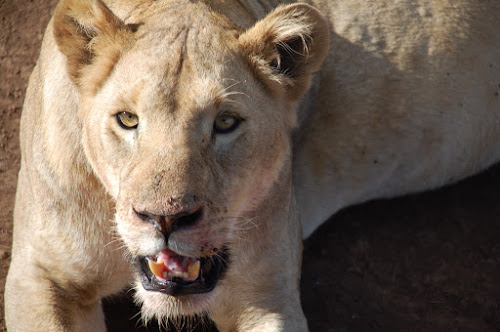

Wow, are these beautiful. Speechless. I am surprised at how the lions have a bit of slackness to their fur and bodies, like someone who was previously overweight and then lost a bunch of lbs, but their skin is just a little too big for their new normal. I could sit in the truck all day in this one spot, watching the lions and get on a plane tomorrow and head back to the states and be content. When we come by this very spot on the way out of the crater, there will be a solitary lioness sentry, standing guard over the half eaten buffalo and panting like crazy in the heat.
But, we push on and right down the road, and a demure distance away from the rest of the pack, is the king of the herd, a regal lion and his mate. She is the prettiest cat we saw, nearly flawless in her fur and they lie lazily in the grass. We learn that lions mate for 7 days, at intervals approaching 30 minutes, and during that time the male lion will not eat (the female lions are the hunters anyway). After roughly ten minutes, the male rises and paces around his lover, they purr at each other, growl a little and then he mounts her from behind. Lions having wild, animal kingdom sex. No way! He does not last long and after only a few minutes the two lions are back to dozing in the sun. This is way more than I had ever imagined seeing on safari!

The rest of the safari is spent circling the crater, and we must have seen thousands of animals: the silhouette of the critically endangered black rhino, the odd elephant or two in the distance, zebras frolicking with each other, a hippo submerged in a small creek, herds and herds of wildebeest, the regal and scary buffalos, packs of hyenas up to no good, a male and female ostrich in the midst of their courting ritual, a male warthog in full tilt pursuit of a female for half a kilometer. The game driving goes on for several hours through this massive geological wonder, and I never, ever get tired of seeing this rich cross section of animals. It is amazing, and an experience that is right near the pinnacle of my travel life.
Hope you Iike the pictures, there are more up on my Pisca page as well.
https://picasaweb.google.com/107842809281323581448/TheDreamTanzania
















